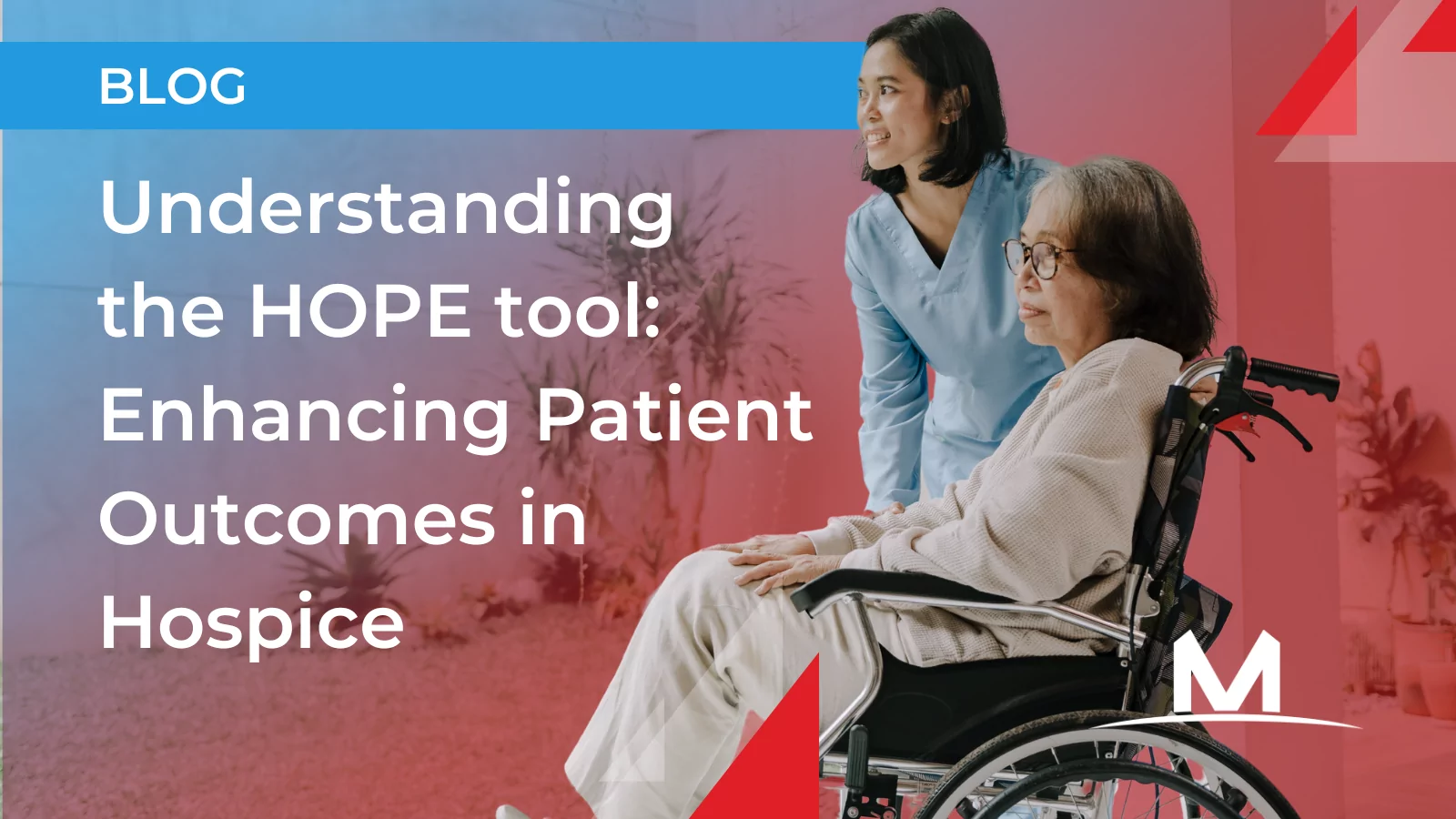Understanding the HOPE Tool: Enhancing Patient-Outcomes in Hospice

Author: Shea Swenson
Edited: October 2, 2024
Posted: May 21, 2024
Boost Patient Outcomes with Data-Driven Technology
Since its popularization, difficult standards of compliance and highly volatile regulation have characterized the post-acute care industry. These continually updated compliance standards act to improve clarity and success for patients while pushing agencies to ensure quality and transparency. In the United States, the Centers for Medicare & Medicaid Services (CMS) play a pivotal role in ensuring quality and accountability while pushing regulation for patient-focused outcomes. One of the areas they oversee, which has received heightened regulation in recent years, is hospice care. Hospice care is designed to provide comfort and support to individuals nearing the end of their lives and their families while navigating through loss and grief. Assessing the quality of hospice care is crucial, and CMS continually pushes regulatory standards and documentation rules to ensure clarity and ease for patients through this trying transition. The Hospice Item Set (HIS) has long been the standard tool used by CMS for assessing hospice care. However, as the healthcare landscape evolves, so must the tools used to evaluate outcomes. This ever-evolving need led to the development of the Hospice Outcomes & Patient Evaluation (HOPE) tool, named in the FY2020 Final Rule2, offering a more comprehensive and outcome-focused approach to hospice care assessment and documentation.
From HIS to HOPE
While the HIS system served its purpose, it suffered limitations that oftentimes failed to outline the countless nuances of hospice care. HIS primarily focuses on process measures, such as the completion of certain tasks or documentation requirements, rather than outcomes that directly impact patient well-being. Although process and outcomes are an essential facet of all medical care, the main goal of hospice is to increase comfort for patients in their final days. This led to a desire for a more holistic approach to assessment. In response to this need, CMS developed the HOPE tool. Unlike the HIS tool, which pulls data from a patient’s medical record, the HOPE tool prioritizes outcome measures at different points of the patient experience.1 This ultimately provides a more accurate reflection of the impact of hospice care on patients and their families. By shifting the focus from processes to outcomes, the HOPE tool offers a more comprehensive assessment of hospice care quality, ensuring agencies remain focused solely on patient comfort and experience, while worrying less about maintaining compliance.
How does the HOPE tool improve hospice care?
Outcome measures are essential in healthcare assessment as they directly assess the results of care provided. In the context of the HOPE tool, outcome measures are used to evaluate various aspects of hospice care, such as symptom management, emotional support, and quality of life.2 By measuring outcomes, the HOPE tool provides valuable insights into the effectiveness of hospice care interventions, while ensuring simple compliance throughout quality hospice care. The HIS tool, which measured processes, created a rigid, compliance-focused landscape. In hospice, the only goal should be the outcomes of the patient, and it remains important to distinguish between outcome measures and process measures. While process measures assess the actions taken by healthcare providers, such as administering medications or conducting assessments, outcome measures evaluate the results of those actions. A process measure might track the frequency of pain assessments conducted, while an outcome measure would assess the level of pain relief experienced by the patient. The HOPE tool re-positions compliance to solely focus on the quality of life for the patient, promoting comfort and success throughout the end-of-life.
The importance of outcome-focused care through HOPE
The HOPE tool comprises various key components to assess the quality of hospice care comprehensively. These components include symptom management, emotional and spiritual support, caregiver support, and the overall quality of life.1 Furthermore, the tool measures these aspects of care at different points in the patient's hospice experience, allowing for a more nuanced understanding of the care provided. Since death, grief, and pain look different case-by case, hospice care requires a much more personal approach to reach success. By focusing on outcome measures, the HOPE tool aims to enhance the quality, and accuracy of hospice care delivery. Using the HOPE tool to measure patient outcomes, hospice providers can identify areas for improvement and tailor interventions to better meet the needs of patients and their families. For example, by regularly assessing symptom management, healthcare providers can adjust treatment plans to ensure patients remain comfortable. Additionally, an outcome-focused assessment enhances decision-making, ultimately bettering the patient and family experience. It also supports standardized outcome measures, aiding in broader quality improvement initiatives.
The MHA Difference – Strategic Implementation Support
The transition from the HIS system to the HOPE tool represents a significant step forward in hospice care assessment. Although the HOPE tool shows potential for improving hospice care assessment, its implementation also carries its own uncertainties. Healthcare providers may require training and education to effectively utilize the tool and interpret the results. Integrating the HOPE tool into existing hospice care practices will require careful consideration and coordination to ensure seamless adoption. The experienced strategic experts at MHA are here to help navigate these difficulties while assisting the industry in understanding how the HOPE tool improves hospice care and how to adopt HOPE for a future of heightened patient-centricity and success. Our consultants bring years of real industry experience, providing their unique perspective and expertise throughout comprehensive assessments, implementations, training, and tech-enabled support. We offer the tools, assistance, and leadership to enhance your technology, align your processes, and empower your people. If you have any questions or are ready to modernize your agency toward patient-focused success, contact us at [email protected] or visit www.maxwellhca.com.
This blog was originally published as "Understanding the HOPE Tool: Enhancing Patient Outcomes in Hospice" by Shea Swenson on May 21, 2024. The MHA team has since updated this article to ensure accuracy and relevance.
Resources:
-
Vossel, Holly. "Hospices Preparing for HOPE Quality Tool Coming from CMS." Hospice News, April 6, 2021. Accessed April 23, 2024. https://hospicenews.com/2021/04/06/hospices-preparing-for-hope-quality-tool-coming-from-cms/.
-
U.S. Centers for Medicare & Medicaid Services. "Hospice Quality Reporting Program (HQRP) - Hospice Outcomes & Patient Evaluation (HOPE)." Last modified March 28, 2024. Accessed April 23, 2024. https://www.cms.gov/medicare/quality/hospice/hope.

